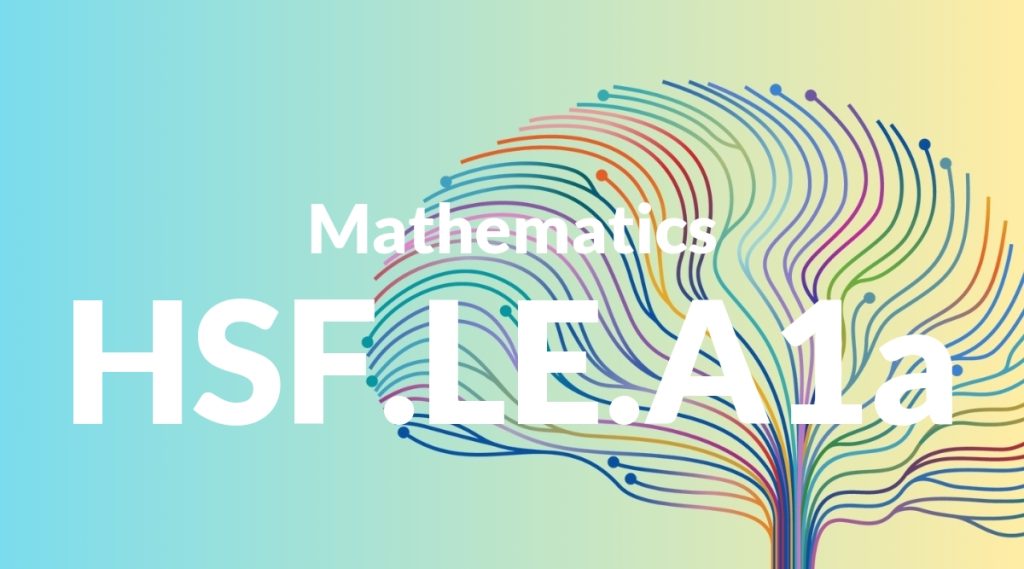Standard: HSF.LE.A1a – Prove that linear functions grow by equal differences over equal intervals, and that exponential functions grow by equal factors over equal intervals.
Grade level: High School: Functions
Subject: Mathematics
Domain: Linear, Quadratic, & Exponential Models
Teacher Overview
This standard focuses on understanding the growth patterns of linear and exponential functions. It’s crucial for students to grasp these concepts as they form the foundation for more advanced mathematical functions and real-world applications, such as financial modeling and scientific data analysis. Students should have a solid understanding of algebraic principles, including solving linear equations and graphing functions. They should also be familiar with the concept of exponential growth and the use of exponents.
Mastering this standard will enable students to tackle more complex mathematical functions and apply these concepts to real-world scenarios, such as financial forecasting and scientific research.
Common Misconception 1
A common misconception is that linear and exponential functions grow at the same rate. This is incorrect because linear functions increase by a constant amount over equal intervals, while exponential functions grow by a constant factor.
Intervention 1
To address this misconception, use graphing software to plot both types of functions over the same intervals. Highlight the differences in growth rates and discuss why these differences occur.
Common Misconception 2
Another misconception is that exponential functions always grow faster than linear functions. This is not always true, especially in the initial stages where a linear function may have a steeper slope.
Intervention 2
Provide examples where a linear function initially grows faster than an exponential function. Use these examples to discuss how the growth rates change over time and why exponential growth eventually outpaces linear growth.
Prerequisite Knowledge
Students should understand basic algebraic concepts, including solving equations and graphing linear functions. Familiarity with exponents and exponential growth is also essential.
Subsequent Knowledge
After mastering this standard, students will be able to apply these concepts to more complex functions, such as logarithmic and polynomial functions. They will also be prepared to analyze real-world data using these models.
Instructional Activities
- Graphing linear and exponential functions using graphing calculators or software
- Analyzing real-world data sets to identify linear and exponential trends
- Creating word problems that involve linear and exponential growth
- Conducting experiments to collect data and model it using linear and exponential functions
- Group discussions on the differences between linear and exponential growth




